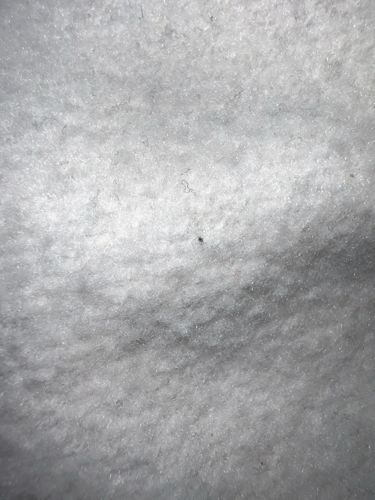Fungus Gnat (likely)
Scientific Name: Sciaridae (or other similar families like Mycetophilidae)
Order & Family: Order: Diptera, Family: Sciaridae (or Mycetophilidae)
Size: Typically 2-5 mm in length, often appearing as tiny black specks.

Natural Habitat
Damp environments, often associated with soil, decaying organic matter, and potted plants. The image background suggests a light-colored, possibly textured surface, which might be a wall or furniture near a plant.
Diet & Feeding
Adult fungus gnats typically do not feed or feed on liquids like nectar. Larvae feed on fungi, organic matter, and plant roots.
Behavior Patterns
Adult fungus gnats are weak flyers and are often seen walking or flying near the surface of soil or on nearby surfaces. They are attracted to light and moisture. Their life cycle involves eggs laid in moist soil, larvae feeding on roots or fungi, pupation in the soil, and emergence as adults.
Risks & Benefits
Potential risks include being a nuisance, especially indoors. Larvae can damage plant roots, particularly in young plants or seedlings, leading to wilting or stunted growth. They generally pose no direct risk to humans (do not bite or spread disease). They can act as decomposers in their natural habitat.
Identified on: 10/22/2025